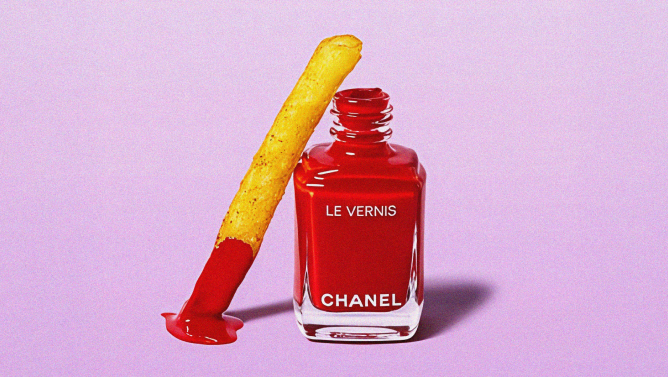The third season of The White Lotus just debuted on HBO, but it is already all over the internet. There are memes about the intro music, character development, and actor choices. But most of all, there are brands that had already started selling merch in collaboration with the TV series long before this season’s release.
For the first two seasons, HBO took a modest promotional approach, but the show had such a big influence that we all expected more this time. The biggest impact was seen in travel, a phenomenon often referred to as “set-jetting,” where, after the first season, tourists increasingly chose Maui—the filming location—as their vacation spot. Then came Taormina, Sicily (season two), and now everyone expects Thailand to be this year’s top destination.

Brand collaborations are everywhere.
But The White Lotus influences far more than travel itineraries. Luxury brands saw the opportunity to associate with the hype surrounding the series and prepared their moves in advance.
The fashion empire Bloomingdale’s created a 34-piece collection inspired by the summery resort vibes of the series. The premium luggage brand Away released a capsule collection featuring its signature suitcases in collaboration with The White Lotus. Meanwhile, Abercrombie & Fitch launched graphic sweaters, T-shirts, caps, and other vacation wardrobe essentials featuring the show’s name. Even H&M has joined in with an airport-themed collaboration inspired by the series.
There are also sunglasses by Diff, a suncare kit by Supergoop!, chocolate bars by Compartés, new Coffee Mate flavors, and mango iced tea from Saint James—all part of The White Lotus collaborations.
But the most interesting part isn’t just the presence of these collaborations—it’s the fact that they launched before the season even aired. This marks a shift from reactive sponsorships to carefully pre-planned marketing campaigns. Brands are no longer just responding to trends; they’re anticipating them and creating products that align with future consumer desires.

The influence of TV in marketing.
TV shows have shaped consumer behavior for decades. Sex and the City made Manolo Blahniks a must-have for every fashionista, and Gossip Girl had us all reaching for headbands. But back then, these trends emerged organically, without brands predicting or engineering them in advance.
Today, television remains a powerful force, but its role in marketing has evolved. It’s no longer just an after-the-fact promotional opportunity—it’s a calculated strategy. Brands are now crafting experiences that immerse audiences deeper into the world of their favorite shows. The White Lotus collaborations don’t simply replicate what’s on screen; they extend the story into everyday life.

Product placement is no longer enough.
HBO, recognizing the potential of immersive fan engagement, has taken this approach even further. In collaboration with Four Seasons Hotels and Resorts, they launched luxury wellness retreats at filming locations, allowing fans to step directly into The White Lotus universe.
This shift reflects a broader transformation in entertainment marketing. Instead of passively waiting for pop culture moments to take off, brands are now shaping them, embedding themselves into the narrative from the very beginning. The goal is no longer just product placement—it’s world-building. By aligning with the themes, aesthetics, and values of The White Lotus, brands don’t just sell a product; they sell an experience, a lifestyle.
The goal is no longer just product placement—it’s world-building. By aligning with the themes, aesthetics, and values of a show like The White Lotus, brands don’t just sell a product; they sell an experience, a lifestyle that audiences aspire to.
To get to this level of anticipation and integration might seem difficult, but it marks a new era of marketing, where brands and TV shows work in tandem to create iconic moments. If done right, the result should seem organic, even though it was based on a lot of planning.
Get in touch with us by leaving a message.


